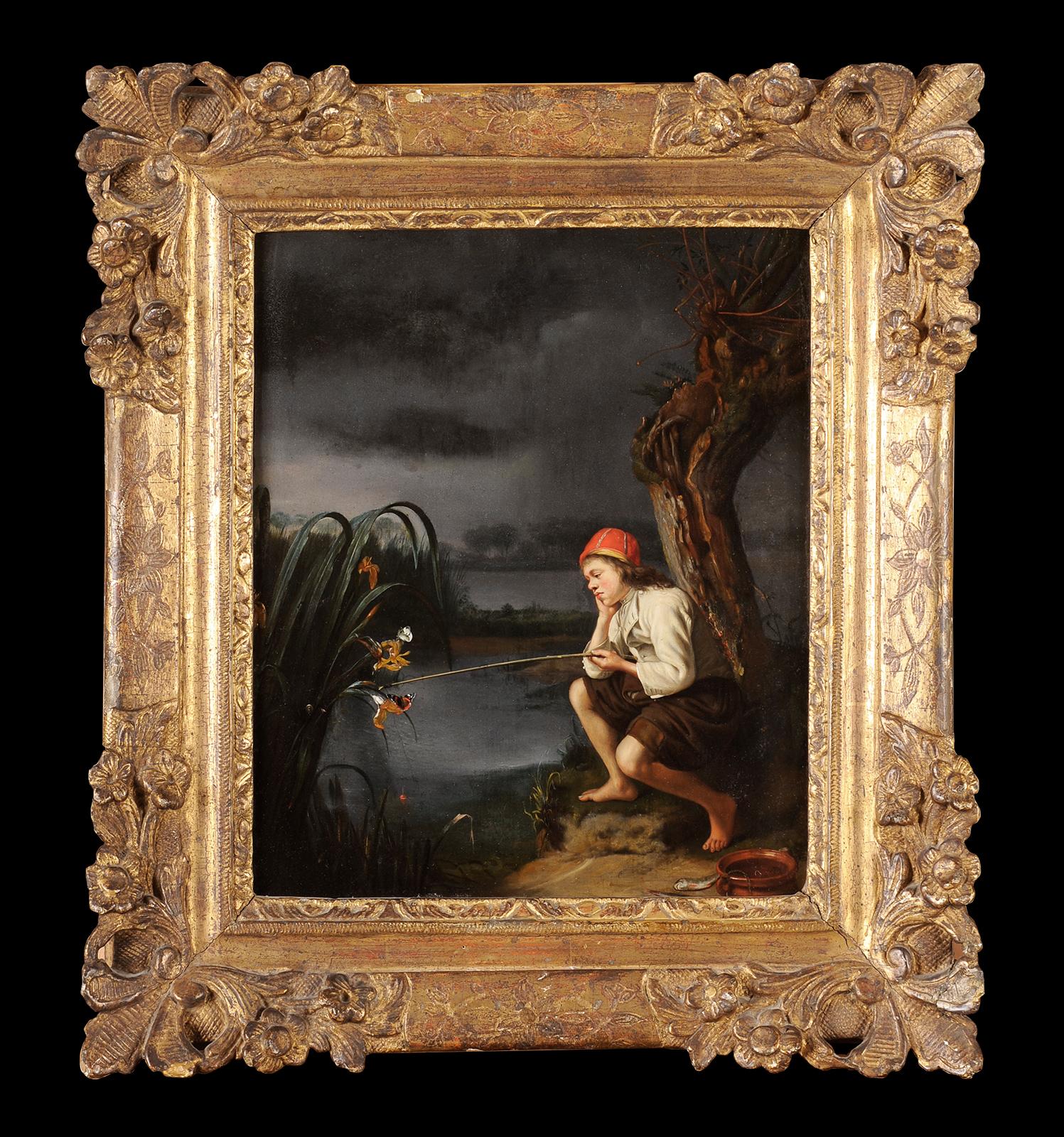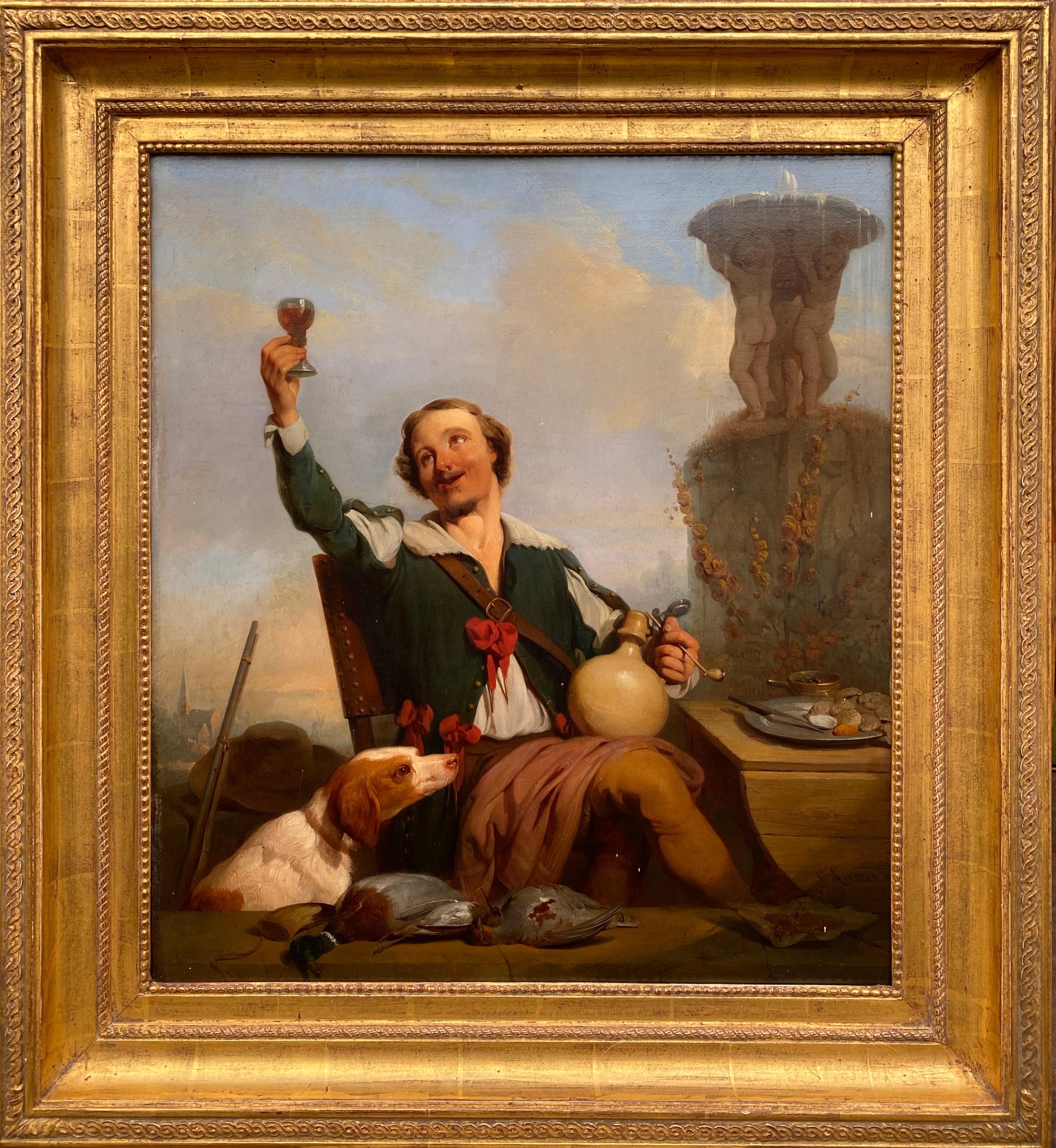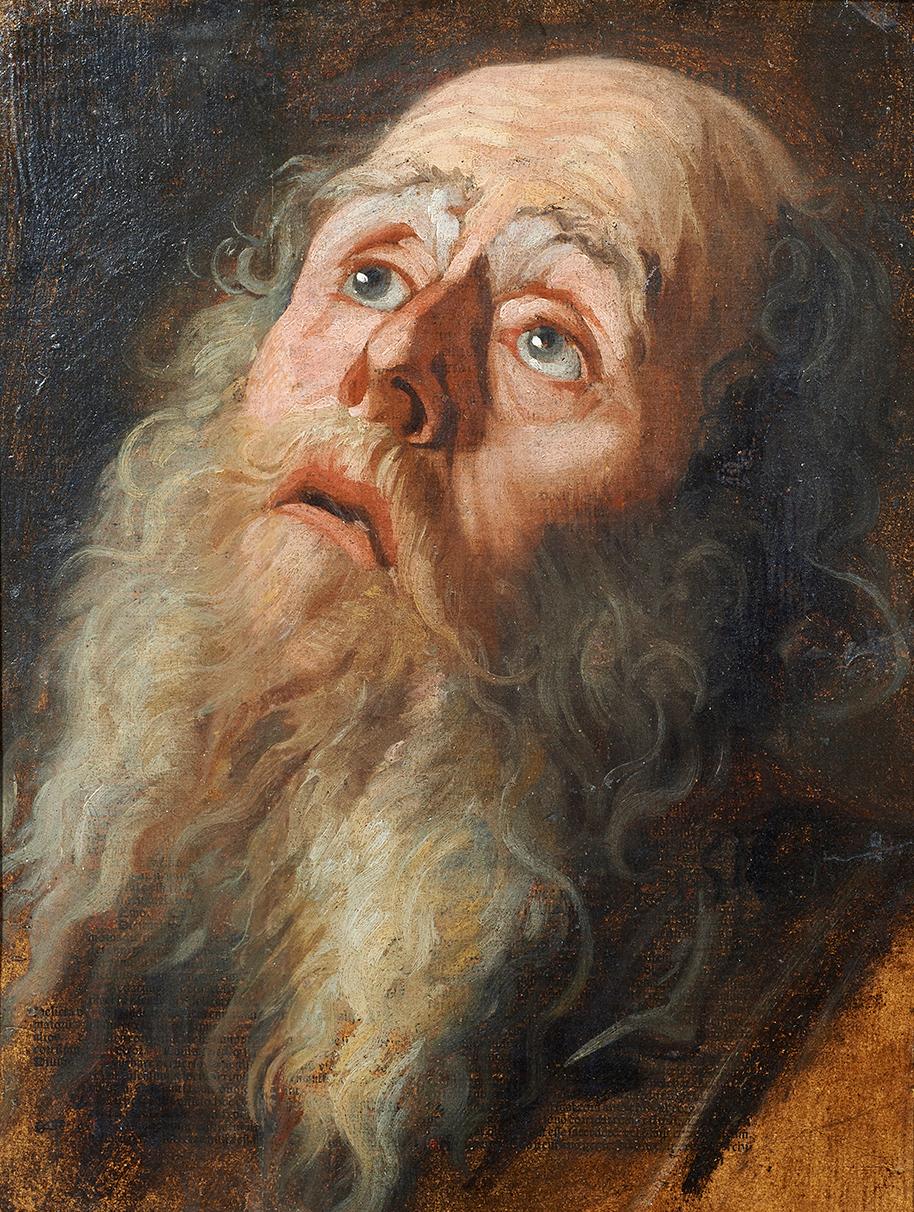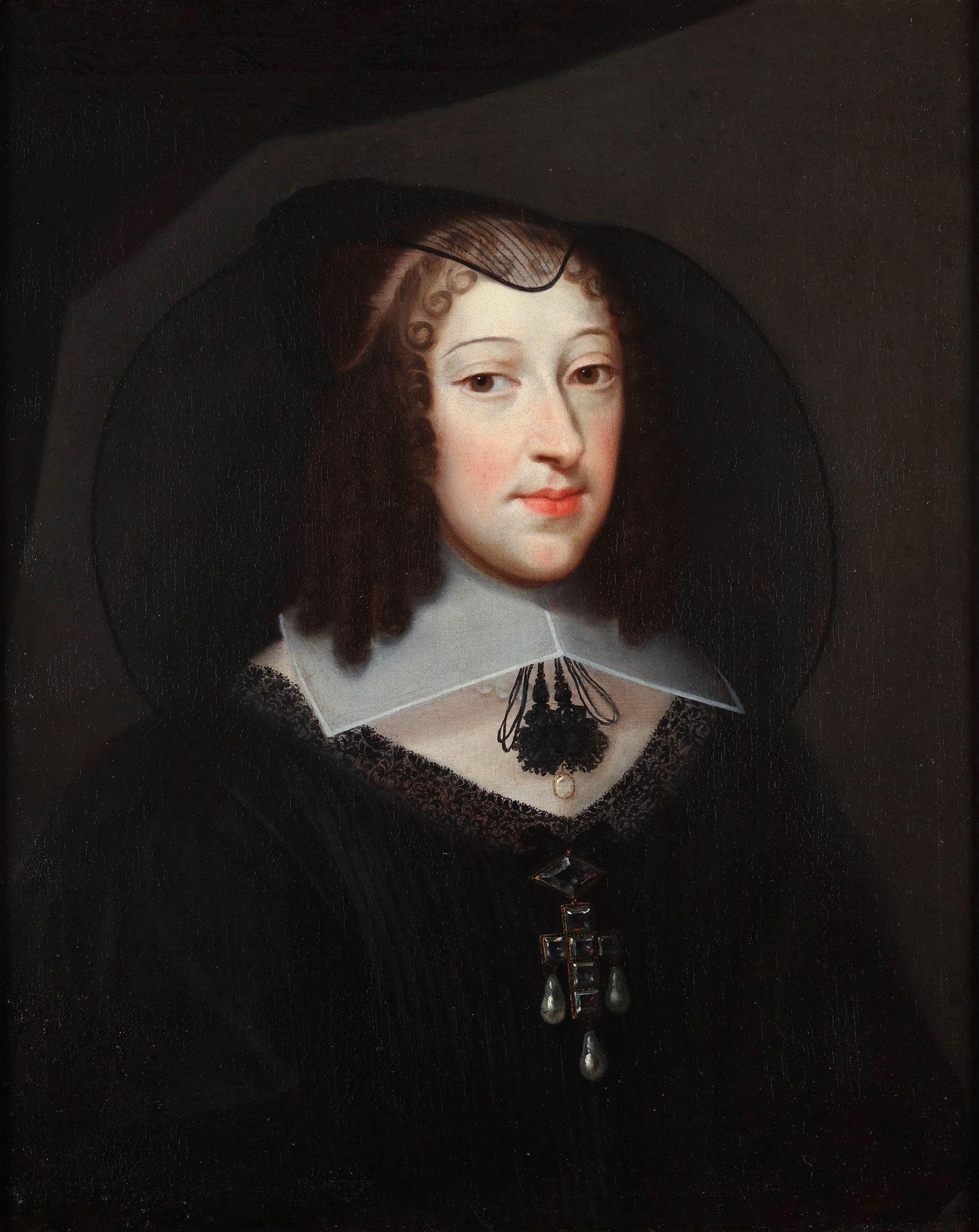Items Similar to Portrait of a bearded man - Adriaen Thomasz. Key (c. 1544-1589)
Want more images or videos?
Request additional images or videos from the seller
1 of 8
Adriaen Thomasz. KeyPortrait of a bearded man - Adriaen Thomasz. Key (c. 1544-1589) 1570
1570
About the Item
Oil on panel
We are grateful to Koenraad Jonckheere for confirming the attribution after inspection of the original. He dates the work to circa 1570.
The present portrait of a bearded man, arresting in its intimacy, capturing the contemplative gaze of the sitter, along with the intense naturalism with which his face is rendered, is an outstanding example of the oeuvre of the Antwerp master Adriaen Thomasz. Key. Attired in an expensive and modish ‘Burgundian black’ doublet, with his hands unsheathed from fine kidskin gloves to show fingers adorned with no less than three rings, it is likely our sitter is an as yet unidentified nobleman. Antwerp was the major economic hub of Northern Europe at this time and the Key workshop, founded by Adriaen Thomasz.’s master Willem Key (1516–1578), portrayed a very international and moneyed clientele, from Margaret of Parma, to William the Silent Prince of Orange. Thus, even the nationality of the sitter remains an open art historical question.
Long thought to be the son of Willem Key, archival research has revealed that Thomas Adriensz was only related to Willem only by marriage, Adriean Thomasz. likely added Key suffix to his name as a guarantor of quality when he took over his late master’s workshop. Following the Beeldenstorm, or iconoclasm of 1566, Antwerp was at the centre of intense religious and political turbulence, but where certainty could at least be sought in the consistently superb qualities of the output of the Key atelier. Arguably even more refined than his master, Jonckheere has spoken of the how: ‘Adriaen succeeded much more than his master to transform his observations of nature into a detailed image.’
Technical analysis by Gianluca Poldi:
The underdrawing of the head is almost completely invisible in the IR images, while some signs of a free, rather large black underdrawing is visible in the hands, particularly near the wrists: the painter probably used another type of drawing technique and material to define and detail the sitter’s face, a material largely transparent to IR radiation like iron-gall ink.
Pigments include ochres and a Kassel-type brown earth, lead white, black pigment and vermillion, quite finely grinded, added to black and brown hues. A red lake is also present, in the flesh tones, mixed with vermillion and lead white.
- Creator:Adriaen Thomasz. Key (1544 - 1589, Flemish)
- Creation Year:1570
- Dimensions:Height: 30.71 in (78 cm)Width: 22.84 in (58 cm)
- Medium:
- Movement & Style:
- Period:
- Condition:
- Gallery Location:Gent, BE
- Reference Number:1stDibs: LU2239213517002
About the Seller
No Reviews Yet
Vetted Seller
These experienced sellers undergo a comprehensive evaluation by our team of in-house experts.
Established in 1999
1stDibs seller since 2022
- ShippingRetrieving quote...Ships From: Gent, Belgium
- Return PolicyThis item cannot be returned.
More From This SellerView All
- Christine de France, duchesse de Savoi - Franco-Flemish school (17th C.)Located in Gent, BEA portrait of Christine de France, duchesse de Savoi, made with oil paint on canvas. Christine Marie of France (10 February 1606 – 27 December 1663) was Duchess of Savoy from 26 Ju...Category
17th Century Flemish School Portrait Paintings
MaterialsOil
- Two portraits, one of a man and one of a lady - Jan van RavensteynLocated in Gent, BEOil on panel Jan van Ravesteyn was described as an outstanding portrait painter by Karel van Mander as early as 1604. After a possible apprenticeshi...Category
17th Century Dutch School Portrait Paintings
MaterialsWood Panel, Oil
- Portrait of a child holding peaches - Jacob Gerritsz. Cuyp (1594-1652)Located in Gent, BEOil on panel Portrait of a child holding peaches, accompanied by a dog. We are grateful to Fred Meijer for confirming the attribution on the basis of high-resolution photographs. The present portrayal of a silk-robed child, attended by a pedigree puppy and holding a sprig of expensive, exotic fruit, exudes the burgeoning wealth of the mid-17th century Dutch Republic, and is characteristic of the accomplished hand of Jacob Gerritsz. Cuyp. The sex of the present child is difficult to determine with certainty, as young boys also were attired in dresses at this time, but the silk bonnet...Category
17th Century Dutch School Portrait Paintings
MaterialsOil
- A portrait of a young boy and Johanna van den Brande - Nicholas MaesLocated in Gent, BEA portrait of a young boy holding a hunting spear and carving words into a tree and A portrait of Johanna van den Brande (1668-1691) - - Nicolaes Maes Oil on canvas The composition of our portrait of a young boy, holds a close resemblance to two other portraits painted by Maes. The first one was to be seen at Woolley and Wallace, in august 2021. It portrayed a young man, older than our boy, in a Japanese rok, also holding a hunting spear and carving words into a tree. The second one is a portrait of Christiaan van...Category
17th Century Dutch School Portrait Paintings
MaterialsCanvas, Oil
- Maria Lactans - Flemish school, 16th centuryLocated in Gent, BEOil on panel This painting, showing the Nursing Madonna, portrays the essence of maternal love and divine tenderness. The Christ child is cradled by the Madonna, her eyes are fille...Category
16th Century Flemish School Paintings
MaterialsOil, Panel
- Virgin and Child - (Attr.) to Master with the Parrot (active 1520 - 1540)Located in Gent, BEOil on panel The Master with the Parrot or the Master of the Parrot is the not name given to a group of Flemish painters who likely worked in a workshop in Antwerp in the first hal...Category
16th Century Flemish School Paintings
MaterialsOil, Panel
You May Also Like
- Young fisher - Phlegmatism allegoryLocated in BELEYMAS, FRAttributed to Godfried SCHALKEN (Made 1643 – The Hague 1706) Young fischer Oil on panel in one board H. 32.5 cm; L. 25.5 cm Around 1670/75 Related works: - Autograph version with numerous variants, Berlin, Gemaldegalerie, Inv. N°837 - Copy or workshop version of our painting with slight variations but of inferior quality, Germany, sold at Berlinghof Auktionshaus in 2002 The object of this notice is not to produce a biography of Schalken, the reference work by Thierry Beherman published by Maeght in 1988. The goal here is to understand this version of a painting of formidable craftsmanship and to compare it to the work preserved in Berlin with its many variants in order to draw some hypotheses for conclusions Our young angler is a very interesting subject that can be found as early as the 16th century to invoke one of the four temperaments. Not melancholy as one might think at first glance, but phlegmatic character. The interpretation of astrological symbols closely linked peach and phlegm, laziness, slowness, often represented alongside the moon. Here the composition is very clear in this sense. The young man, chin resting on his arm, looks at his modest cane, the cork of which he soaks alongside snails and butterflies located in the Irises. All near a willow under a heavy sky, like a night sky. All the elements are there to give an explanation of the subject and not to leave the spectator in front of a simple genre scene. Let's go back to the willow, a tree that loses its fruits before they mature. It is often considered a symbol of lost youth, a reference to passivity or times of debauchery. Plato advised in his time to banish fishing from the education of children since it is an activity of expectation and not of exercise or reflection. Needless to explain the presence of small slow-moving animals with short lives or flowers… The image speaks for itself! Let's go back to the differences between the Berlin version and ours, of which it must be recognized that the quality is slightly lower and therefore can hardly be given with certainty to Schalken itself. This version has some additional elements compared to ours. In our version, the row of willows cut into trunks located to the left of the composition is replaced by a simple area of reeds that opens up to a luminous sky. The sky is also different by the clouds represented. A white butterfly flying in the middle of the Irises has been removed, as has a large leaf located on the back of the young fisherman at the foot of the willow. Only addition to our table in addition to the Berlin version: a second fish near the earthen pot...Category
1680s Flemish School Figurative Paintings
MaterialsWood Panel, Oil
- Portrait of a lady in a lace collar.By Circle of Paul van SomerLocated in Tallinn, EEPaul van Somer, circle of (1576, Antwerp - 1621, London) Portrait of a lady in a lace collar. Oil on panel. 64 x 49.5 cm. Provenance Private collection, Switzerland The present...Category
17th Century Flemish School Portrait Paintings
MaterialsOil, Panel
- After a Good Hunt, Petrus Kremer, Antwerp 1801 – 1888, Belgian Painter, SignedLocated in Bruges, BEAfter a Good Hunt Kremer Petrus Antwerp 1801 – 1888 Belgian Painter Signature: Signed bottom left Dimensions: Image size 49,50 x 44 cm, frame size 63,50 x 58,50 cm Medium: Oil on panel Biography: Kremer Petrus was born on May 9 in 1801 in Antwerp. He was a Belgian painter of genre scenes with religious and historic context, still lifes and portraits. He studied at the Antwerp Academy of Fine Art, with master teachers and artists Guillaume Herreyns (1743 – 1827) and Mattheus van Bree (1773 – 1839). He perfected himself in Paris, travelled in 1838 Germany, France and Italy where he studied in the museums the pictures of the Dutch and Flemish masters. He excelled in the representation of flowers, poultry and game. Some of his paintings were engraved by English engraver Joseph Brown (1809 – 1887) and other artists. Belgian painter Gustaaf Wappers (1803 – 1874) painted his portrait. Kremer was honoured with several medals at various exhibitions, notably in London in 1929. He exhibited at the Brussels National Exhibition of 1842 “Examination of Don Carlos...Category
19th Century Flemish School Portrait Paintings
MaterialsOil, Panel
- 17th Century Old Head Flemish School Eyes Caravagism Oil on Canvas Yellow WhiteLocated in Sanremo, ITPainting oil on panel depicting a strong and distinctive old man's head with dimensions of 36 x 28 cm without frame and 68 x 60 with frame coeval Flemish school of the second half of...Category
Late 17th Century Flemish School Portrait Paintings
MaterialsOil, Board
- After the Hunt, Jan Josef Horemans the Younger, Antwerp 1714 – 1790, FlemishBy Jan Josef Horemans the YoungerLocated in Bruges, BEAfter the Hunt Jan Josef Horemans the Younger Antwerp 1714 – 1790 Flemish School Signature: Attributed to Jan Josef the Younger Horemans Medium: Oil on canvas Dimensions: Size incl...Category
18th Century Flemish School Interior Paintings
MaterialsCanvas, Oil
- After Franken School Crucifixion of Jesus PannelLocated in Pasadena, CAFrans Francken the Younger (1581, Antwerp – 6 May 1642, Antwerp was a Flemish painter and the best-known and most prolific member of the large Francken family of artists.[1] He painted large altarpieces for churches as well as smaller historical, mythological and allegorical scenes. His depictions of collectors' cabinets established a popular new genre of art in the era. Francken often collaborated with other artists, adding figures and narrative elements to scenes created by specialists in landscape, architectural and floral still life painting Francken was a versatile artist who practiced in many genres and introduced new subjects into Flemish art. Many of his works are small historical, allegorical and biblical...Category
17th Century Flemish School Figurative Paintings
MaterialsOil





